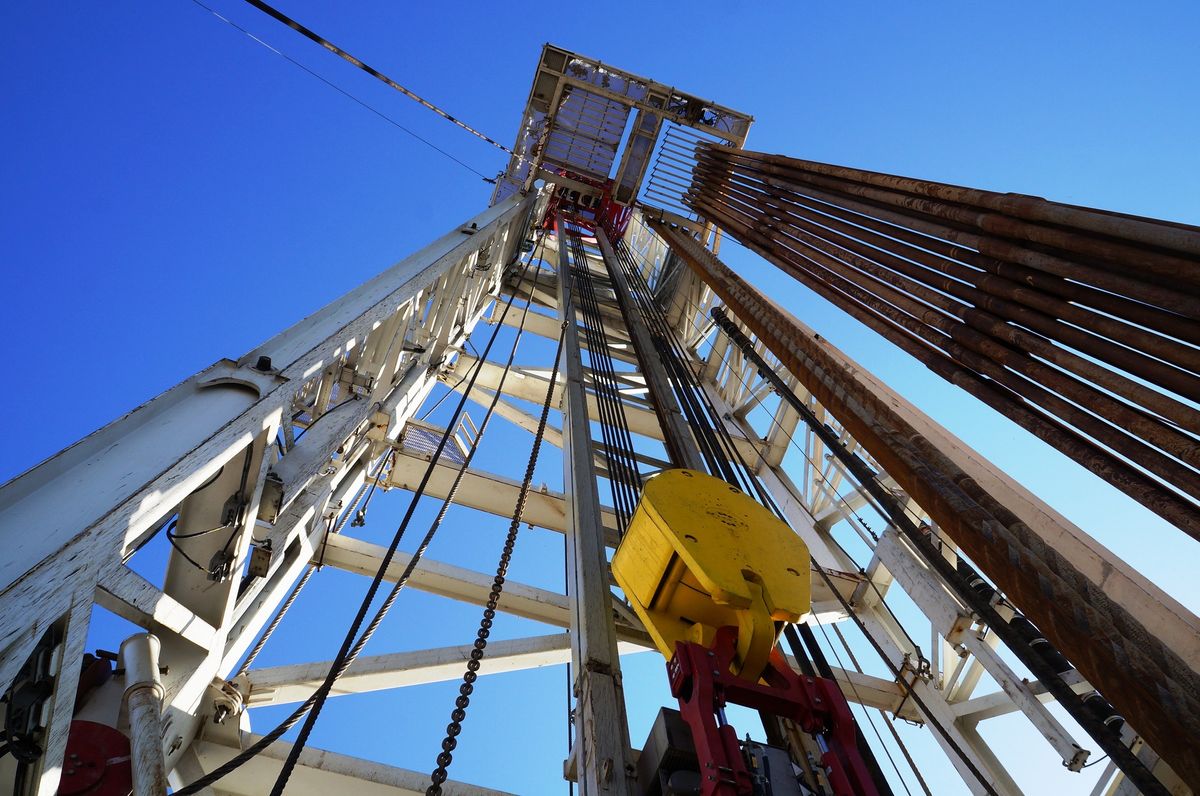In the intricate dance of international trade, the energy sector between the USA and Saudi Arabia is not immune to the challenges of delinquent accounts. Effective management of these accounts is crucial for maintaining financial stability and ensuring the continuity of trade relations. This article delves into the multifaceted approach to handling delinquent accounts within this specific trade context, exploring the recovery system, assessing the viability of debt recovery, navigating the decision to litigate, understanding the financial implications, and strategizing on persistent delinquency.
Key Takeaways
- The recovery system for delinquent accounts is a structured three-phase process designed to maximize the chances of debt recovery, starting with contact and skip-tracing, escalating to affiliated attorneys, and potentially leading to litigation.
- Assessing the viability of debt recovery is a critical step that involves a thorough investigation of the debtor’s assets and the case facts to determine the likelihood of recovery and to make informed decisions on case closure or litigation.
- The decision to litigate should be carefully evaluated against the potential costs and benefits, with an understanding of the financial commitments required and the various outcomes that may result from legal action.
- Collection activities have significant financial implications, with collection rates and fee structures varying based on the age and value of the account, and the number of claims submitted, impacting the overall cost of collection.
- Strategic approaches to persistent delinquency include utilizing standard collection activities, considering the placement of accounts with an attorney, and leveraging competitive collection rates to inform decision-making processes.
Understanding the Recovery System for Delinquent Accounts
Phase One: Initial Contact and Skip-Tracing
We hit the ground running within 24 hours of account placement. Our first step: sending a series of letters to the debtor, ensuring they’re aware of the overdue account. But it’s not just about sending notices; we dive deep with skip-tracing, unearthing the best financial and contact information available.
Daily attempts to reach a resolution follow—calls, emails, texts, faxes, you name it. We’re persistent but professional, always aiming for a swift resolution. If these efforts don’t yield results within 30 to 60 days, we’re ready to escalate. It’s a structured approach, designed to secure overdue accounts efficiently.
Our goal is clear: resolve the matter before it escalates. But if we need to turn up the heat, we’re prepared to move to Phase Two, engaging our network of affiliated attorneys.
Here’s a snapshot of our initial contact strategy:
- Send the first of four letters via US Mail
- Conduct thorough skip-tracing
- Make daily contact attempts for the first 30 to 60 days
Securing overdue accounts in automotive exports to Saudi Arabia requires a strategic Recovery System with timely contact, legal considerations, and cost-effective collection rates for successful debt recovery.
Phase Two: Escalation to Affiliated Attorneys
When our initial attempts to resolve delinquent accounts through letters and calls don’t yield results, we escalate the matter to our network of affiliated attorneys. This marks a significant shift in our recovery process, as the debtor now faces legal pressure to settle the debt. The attorney’s letterhead adds a level of seriousness that can often prompt a swift resolution.
Our attorneys don’t just rely on written demands; they actively pursue the debtor with phone calls, aiming to negotiate a settlement. If these efforts remain fruitless, we’re faced with a tough decision. We’ll provide you with a detailed report outlining the debtor’s situation and our recommended course of action, whether that’s to close the case or proceed with litigation.
- Immediate drafting of demand letters by the attorney
- Persistent phone contact attempts
- Detailed report and recommendation for next steps
We’re committed to a transparent and effective recovery process. Our goal is to ensure that every viable avenue is explored before moving to more drastic measures.
Phase Three: Litigation and Closure Recommendations
At this juncture, we face a critical decision. If our investigation suggests recovery is improbable, we’ll advise case closure, sparing you any fees. However, should litigation seem viable, a choice looms.
Opting out means withdrawing the claim at no cost, or continuing with standard collection efforts. Choosing litigation necessitates upfront costs, typically $600-$700, for court and filing fees. Our affiliated attorney will then champion your cause, seeking full recompense.
Our rates are competitive, hinging on claim volume and age. For instance, accounts under a year incur a 30% fee upon collection. It’s a strategic balance, weighing potential gain against the financial commitment of legal proceedings.
We stand ready to guide you through either path, ensuring clarity in your options and transparency in our rates.
Assessing the Viability of Debt Recovery
Investigating Debtor’s Assets and Case Facts
We dive deep into the debtor’s financial landscape, deploying skip-tracing and comprehensive investigative tactics. Our strategic approach is tailored to international trade law, ensuring we adapt to Saudi legal requirements and enforce contracts effectively.
We’re committed to a rapid recovery process, focusing on the most relevant information to assess the debtor’s ability to pay.
Our meticulous investigation includes, but is not limited to:
- Reviewing the debtor’s asset ownership
- Analyzing financial statements and credit reports
- Investigating business operations and revenue streams
This thorough analysis is crucial for a successful recovery effort in USA-Saudi energy sector trade projects.
Determining the Likelihood of Recovery
We weigh every factor meticulously to gauge the viability of debt recovery. The debtor’s assets and case history are scrutinized to predict the success of our collection efforts. If the odds are not in our favor, we advise case closure, ensuring you owe nothing for our services.
Our decision hinges on a comprehensive analysis. We consider the age of the account, the amount owed, and the debtor’s financial standing. These elements are critical in determining the next steps.
Here’s a snapshot of our considerations:
- Debtor’s asset liquidity
- Account age
- Total debt value
- Previous collection attempts
Should the assessment reveal a low likelihood of recovery, we’ll recommend no further action, sparing you unnecessary expenses. Conversely, if prospects look promising, we’ll gear up for litigation, with a clear outline of the associated costs.
Recommendations for Case Closure or Litigation
When we reach the crossroads of case closure or litigation, our guidance hinges on the viability of debt recovery. We must choose the path that aligns with our client’s best interests.
If the likelihood of recovery is slim, we advise closing the case. This decision incurs no fees, ensuring you’re not further out of pocket. Conversely, if litigation appears promising, we’ll present the costs upfront. Expect fees in the ballpark of $600-$700, covering court and filing expenses.
Our commitment is to provide clear, actionable advice, whether that means stepping back or taking the legal plunge.
Our competitive collection rates are structured to reflect the age and value of the account, as well as the number of claims. Here’s a snapshot:
- For 1-9 claims, rates range from 30% to 50% of the amount collected.
- For 10 or more claims, rates decrease, starting at 27% for newer accounts.
Choosing to litigate means committing financially, but it also opens the door to potentially reclaiming what’s owed. We stand ready to support whichever route you take, with a multi-phase recovery system designed for success.
Navigating the Decision to Litigate
Evaluating the Costs and Benefits of Legal Action
When we consider taking legal action, we must weigh the potential recovery against the upfront costs. Deciding to litigate is not just about the money owed; it’s about the likelihood of successful recovery.
Upfront legal costs can be a deterrent, typically ranging from $600 to $700, depending on the debtor’s jurisdiction. These include court costs, filing fees, and may extend to cover the cost of filing the lawsuit itself. If litigation fails, the case closes, and you owe nothing further.
Our competitive collection rates are structured to align with your claim’s age and value. For instance:
- Accounts under 1 year: 30% of the amount collected.
- Accounts over 1 year: 40% of the amount collected.
- Accounts under $1000: 50% of the amount collected.
- Accounts placed with an attorney: 50% of the amount collected.
We must ensure that the decision to litigate is based on a solid foundation of facts and a clear understanding of the financial commitments involved. The consequences of failed litigation can be significant, not just in financial terms but also in the time and resources expended.
Ultimately, our goal is to achieve the best possible outcome for your delinquent accounts, balancing the costs of legal action with the potential benefits. We strive to provide a recovery system that is efficient and effective, tailored to the unique aspects of the USA-Saudi energy sector trade.
Understanding the Financial Commitments Required
When we decide to take the leap into litigation, we’re committing to more than just a legal battle; we’re investing in the potential for recovery. The upfront costs are tangible and necessary, covering court costs and filing fees, typically ranging from $600 to $700. These are the stakes we place on the table, hoping for a favorable outcome.
Our fee structure is straightforward and competitive, designed to align with your recovery success. Here’s a quick breakdown:
- For 1-9 claims, expect 30% to 50% of the amount collected, depending on the account’s age and value.
- For 10 or more claims, rates drop slightly, reflecting our commitment to volume.
We stand by our promise: if recovery through litigation fails, you owe us nothing. That’s our commitment to you.
Remember, these financial commitments are not just expenses; they’re a strategic investment in reclaiming what’s owed to us. We weigh these costs against the likelihood of recovery and the value of the accounts in question. It’s a calculated risk, one that we navigate with precision and care.
The Process of Filing a Lawsuit and Potential Outcomes
When we decide to take legal action, the path is clear-cut. We initiate by paying the upfront legal costs, which typically range between $600 to $700. These costs cover court fees, filing fees, and other related expenses. Upon settling these fees, our affiliated attorney proceeds to file a lawsuit on our behalf.
The lawsuit aims to recover all monies owed, including the initial legal costs. However, if litigation does not result in recovery, we close the case, owing nothing further to our firm or the attorney. It’s a calculated risk, but one that can lead to full debt recovery.
The decision to litigate is never taken lightly. We weigh the potential gains against the financial commitments required.
Here’s a quick breakdown of our collection rates, which vary depending on the number of claims and the age of the accounts:
- For 1-9 claims, accounts under 1 year: 30% of the amount collected.
- For 1-9 claims, accounts over 1 year: 40% of the amount collected.
- For 10 or more claims, accounts under 1 year: 27% of the amount collected.
- For 10 or more claims, accounts over 1 year: 35% of the amount collected.
These rates are competitive and tailored to the specifics of each case, ensuring we approach each delinquent account with a strategy that maximizes the likelihood of recovery while minimizing unnecessary expenditures.
Financial Implications of Collection Activities
Collection Rates and Fee Structures
We understand the intricacies of collection rates and fee structures, ensuring transparency and competitiveness. Our rates are tailored to the volume and age of accounts, incentivizing early action and reflecting the increased effort required for older debts. The age and value of an account significantly influence the collection costs.
For instance, accounts under one year incur a 30% fee, while those over a year rise to 40%. Smaller accounts under $1000 have a 50% rate, as do accounts requiring attorney involvement. Bulk submissions of 10 or more claims enjoy reduced rates, rewarding clients who act decisively against delinquency.
We’re committed to providing competitive rates that align with your recovery goals. Our fee structure is designed to adapt to the unique challenges of each claim, ensuring you receive the most effective service possible.
Remember, addressing issues promptly can mitigate costs and preserve customer relationships. It’s crucial to be aware of legal considerations, especially when dealing with international trade, such as between the USA and Saudi Arabia.
Impact of Account Age and Value on Collection Costs
We understand that the age and value of an account significantly influence collection costs. Older accounts often require more resources to collect, as debtors may have become harder to locate or less responsive over time. Conversely, newer accounts typically present a higher success rate and lower associated costs.
The value of the account also plays a crucial role. Smaller debts, especially those under $1000, may not justify the expenses of aggressive collection tactics or legal action. Our fee structure reflects these realities, with higher percentages for smaller and older debts to offset the increased effort required.
Here’s a quick breakdown of our collection rates:
- Accounts under 1 year: 30% (1-9 claims) or 27% (10+ claims)
- Accounts over 1 year: 40% (1-9 claims) or 35% (10+ claims)
- Accounts under $1000: 50% regardless of the number of claims
- Accounts placed with an attorney: 50% regardless of the number of claims
The recovery process for delinquent accounts involves three phases: legal action, closure with no fees, or litigation. Costs range from $600-$700. Collection rates vary. Failed litigation results in case closure with no fees.
Comparing Rates for Individual vs. Multiple Claims
When we tackle the challenge of delinquent accounts, we’re always looking for the most cost-effective strategies. Our rates are structured to incentivize volume—the more claims you bring to us, the lower the percentage we take on collections. It’s a simple scale that rewards your trust in our services.
For individual claims, the rates can seem steep, especially for accounts that are older or of lower value. But when you bundle multiple claims, the savings are clear. Here’s a quick breakdown:
| Number of Claims | Accounts < 1 Year | Accounts > 1 Year | Accounts < $1000 | Attorney Placed |
|---|---|---|---|---|
| 1-9 | 30% | 40% | 50% | 50% |
| 10+ | 27% | 35% | 40% | 50% |
We tailor our services to your needs, ensuring financial stability and efficiency. Whether you’re dealing with a single delinquent account or managing a portfolio of them, we adapt our approach to maximize your recovery while minimizing costs.
Remember, time is a critical factor in debt recovery. The age of an account can significantly impact collection costs. We’re here to guide you through the process, offering competitive rates and a robust 3-phase recovery system. With Debt Collectors International, you’re not just hiring a service; you’re partnering for success.
Strategic Approaches to Persistent Delinquency
Utilizing Standard Collection Activities
We understand the importance of standard collection activities in the recovery process. Persistence is key; we employ a variety of methods such as calls, emails, and faxes to engage with debtors. Our approach is systematic and relentless, ensuring every avenue is explored before escalating the matter.
We’re committed to resolving delinquent accounts through diligent follow-ups and strategic communication. This phase is critical in laying the groundwork for any necessary legal action.
Our competitive rates are structured to incentivize recovery while maintaining financial viability for our clients. Here’s a quick breakdown of our fee structure based on the number of claims and account details:
| Number of Claims | Account Age | Collection Rate |
|---|---|---|
| 1-9 | Under 1 yr | 30% |
| 1-9 | Over 1 yr | 40% |
| 10+ | Under 1 yr | 27% |
| 10+ | Over 1 yr | 35% |
Addressing delinquent accounts in USA-Saudi consumer goods trade is crucial for financial stability. A Recovery System with three phases helps recover funds effectively and resolve debts.
When to Consider Placing Accounts with an Attorney
When we’ve exhausted all standard collection activities without success, it’s time to consider a more assertive approach. Placing accounts with an attorney can be a decisive step towards recovery. Here’s when we make the call:
- The debtor remains unresponsive or disputes the debt despite our efforts.
- We’ve identified assets or income streams that could satisfy the debt.
- The amount owed justifies the additional costs of legal action.
We must weigh the potential recovery against the legal costs and the age of the account. It’s a strategic decision, not taken lightly.
Our competitive collection rates remain a key consideration. For accounts placed with an attorney, the rate is 50% of the amount collected, regardless of the number of claims. This is a significant commitment, but one that may be necessary to uphold our clients’ financial interests.
The Role of Competitive Collection Rates in Decision-Making
In the complex dance of debt recovery, competitive collection rates are the rhythm we move to. They’re not just numbers; they’re strategic tools that influence our every step. When we weigh the decision to pursue a delinquent account, we must consider the balance between potential recovery and the cost of collection efforts.
Our rates are tailored to the specifics of each case, with the understanding that the age and value of an account can significantly impact the collection costs. Here’s a snapshot of our fee structure:
| Number of Claims | Account Age | Collection Rate |
|---|---|---|
| 1-9 | < 1 year | 30% |
| 1-9 | > 1 year | 40% |
| 10+ | < 1 year | 27% |
| 10+ | > 1 year | 35% |
We must navigate these waters with a keen eye on the bottom line, ensuring that our pursuit of unpaid debts is both judicious and economically sound.
Ultimately, the decision to place accounts with an attorney or to initiate litigation hinges on a clear understanding of these rates. They are the deciding factor in whether we escalate our efforts or choose a more measured approach.
Navigating the complexities of persistent delinquency requires a strategic approach that is both effective and efficient. At Debt Collectors International, we specialize in providing tailored solutions that address the unique challenges of each industry. Our experienced team is equipped with the skills to mediate disputes, locate assets, and enforce judgments to ensure maximum recovery for our clients. Don’t let overdue accounts disrupt your business—take the first step towards reclaiming what is rightfully yours. Visit our website to learn more about our services and how we can assist you in turning delinquencies into recoveries.
Frequently Asked Questions
What happens in Phase Three if the possibility of debt recovery is not likely?
If after a thorough investigation it is determined that the possibility of recovery is not likely, the recommendation will be to close the case. You will owe nothing to the firm or the affiliated attorney for these results.
What are my options if litigation is recommended but I decide not to proceed with legal action?
If you decide not to proceed with legal action, you can either withdraw the claim with no obligation to pay the firm or the affiliated attorney, or you can choose to continue with standard collection activities such as calls, emails, and faxes.
What upfront legal costs are required if I decide to proceed with litigation?
If you decide to proceed with litigation, you will be required to pay upfront legal costs, which typically range from $600.00 to $700.00, depending on the debtor’s jurisdiction. These costs cover court costs, filing fees, etc.
What are the collection rates and how do they vary?
Collection rates vary depending on the number of claims and the age and value of the accounts. Rates range from 27% to 50% of the amount collected, with different rates for accounts under 1 year, over 1 year, under $1000, and those placed with an attorney.
What actions are taken during Phase One of the Recovery System?
During Phase One, within 24 hours of placing an account, a series of letters are sent, the case is skip-traced, and the collector attempts to contact the debtor using various communication methods. Daily attempts to contact the debtor are made for the first 30 to 60 days.
What can I expect when my case is escalated to Phase Two?
In Phase Two, the case is forwarded to an affiliated attorney who will draft demand letters and make telephone attempts to contact the debtor. If these attempts fail to resolve the account, a recommendation for the next step will be provided.





